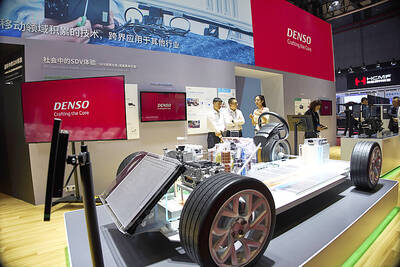Many of the details of Uniqlo’s aggressive US expansion still need to be worked out, but at least one thing is clear: The campaign will start on the coasts.
The Japanese apparel chain, known in its home market for its cheap chic clothing basics, has so far confined its US adventure to cities like Boston, San Francisco and Los Angeles.
However, a broader US presence will be inevitable as the company blankets the country as part of its ambition to become the world’s biggest specialty apparel retailer. Uniqlo hopes to grow from fewer than 10 US stores last year, to about 40 by the end of this year, to 200 by 2020.
“We will have a much larger footprint, which has to include the middle of the country,” Uniqlo USA chief executive Larry Meyer said.
So far, Uniqlo’s brand recognition is strong in the northeast, where consumers know its flagship US stores in New York City, and in the west coast, where a large Asian population already recognizes the company.
Uniqlo, a unit of Fast Retailing Co, is part of a wave of giants remaking global apparel. This group includes Spain’s Grupo Inditex, parent of Zara; Sweden’s Hennes & Mauritz (H&M) and US chain Gap, all of which have greater sales than Uniqlo. For now.
The US, along with China and Southeast Asia, are the key growth markets identified by founder and chief executive Tadashi Yanai, ranked Japan’s second-richest man by Forbes
Yanai aims to increase global sales to ¥5 trillion (almost US$50 billion) by 2020, about a fivefold increase from last year’s sales and a sum that would make it the biggest player in this segment.
Yanai’s philosophy “and my philosophy is, ‘If you think small, you get no higher. So you might as well think big,’” said Meyer, a retail industry veteran who joined Uniqlo in January last year.
Uniqlo is especially known for basics like T-shirts that may fetch US$12 and undergarments that cost less than half of what they would at department stores.
The company also prides itself on innovations like “heattech,” a thin fabric that keeps heat from escaping the body, and “performance wear,” athletic gear donned by tennis star Novak Djokovic that is sweat and odor-resistant.

GROWING OWINGS: While Luxembourg and China swapped the top three spots, the US continued to be the largest exposure for Taiwan for the 41st consecutive quarter The US remained the largest debtor nation to Taiwan’s banking sector for the 41st consecutive quarter at the end of September, after local banks’ exposure to the US market rose more than 2 percent from three months earlier, the central bank said. Exposure to the US increased to US$198.896 billion, up US$4.026 billion, or 2.07 percent, from US$194.87 billion in the previous quarter, data released by the central bank showed on Friday. Of the increase, about US$1.4 billion came from banks’ investments in securitized products and interbank loans in the US, while another US$2.6 billion stemmed from trust assets, including mutual funds,

Micron Memory Taiwan Co (台灣美光), a subsidiary of US memorychip maker Micron Technology Inc, has been granted a NT$4.7 billion (US$149.5 million) subsidy under the Ministry of Economic Affairs A+ Corporate Innovation and R&D Enhancement program, the ministry said yesterday. The US memorychip maker’s program aims to back the development of high-performance and high-bandwidth memory chips with a total budget of NT$11.75 billion, the ministry said. Aside from the government funding, Micron is to inject the remaining investment of NT$7.06 billion as the company applied to participate the government’s Global Innovation Partnership Program to deepen technology cooperation, a ministry official told the

Taiwan Semiconductor Manufacturing Co (TSMC, 台積電), the world’s leading advanced chipmaker, officially began volume production of its 2-nanometer chips in the fourth quarter of this year, according to a recent update on the company’s Web site. The low-key announcement confirms that TSMC, the go-to chipmaker for artificial intelligence (AI) hardware providers Nvidia Corp and iPhone maker Apple Inc, met its original roadmap for the next-generation technology. Production is currently centered at Fab 22 in Kaohsiung, utilizing the company’s first-generation nanosheet transistor technology. The new architecture achieves “full-node strides in performance and power consumption,” TSMC said. The company described the 2nm process as

JOINT EFFORTS: MediaTek would partner with Denso to develop custom chips to support the car-part specialist company’s driver-assist systems in an expanding market MediaTek Inc (聯發科), the world’s largest mobile phone chip designer, yesterday said it is working closely with Japan’s Denso Corp to build a custom automotive system-on-chip (SoC) solution tailored for advanced driver-assistance systems and cockpit systems, adding another customer to its new application-specific IC (ASIC) business. This effort merges Denso’s automotive-grade safety expertise and deep vehicle integration with MediaTek’s technologies cultivated through the development of Media- Tek’s Dimensity AX, leveraging efficient, high-performance SoCs and artificial intelligence (AI) capabilities to offer a scalable, production-ready platform for next-generation driver assistance, the company said in a statement yesterday. “Through this collaboration, we are bringing two